
MCSP worked hand-in-hand with the Ministry of Health, Community Development, Gender, Elderly and Children (MOHCDGEC)/ ImmunizationVaccine) Immunization and Vaccine Development (IVD) Program to strengthen the delivery of Tanzania’s routine immunization services and to introduce new life-saving vaccines. Partnering at national level and within four regions, MCSP supported the IVD Program to strengthen its workforce and […]
Read More…
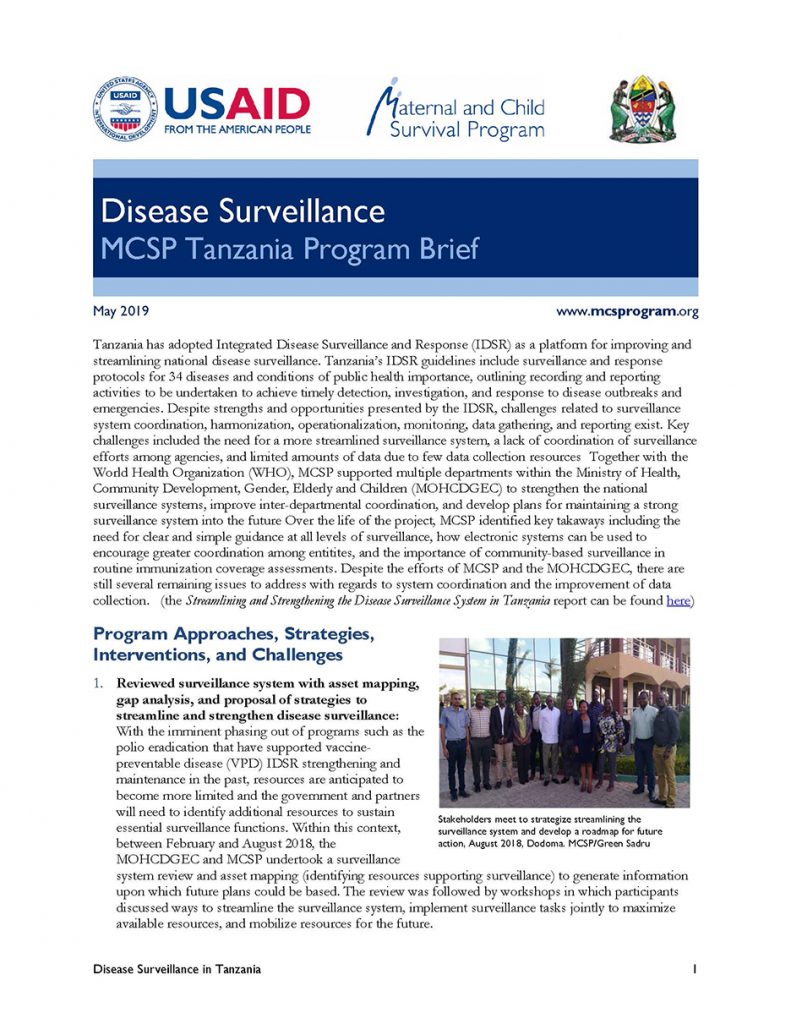
Together with the World Health Organization (WHO), MCSP supported multiple departments within the Ministry of Health, Community Development, Gender, Elderly and Children (MOHCDGEC) to strengthen the national disease surveillance systems, improve inter-departmental coordination, and develop plans for maintaining a strong surveillance system into the future. […]
Read More…
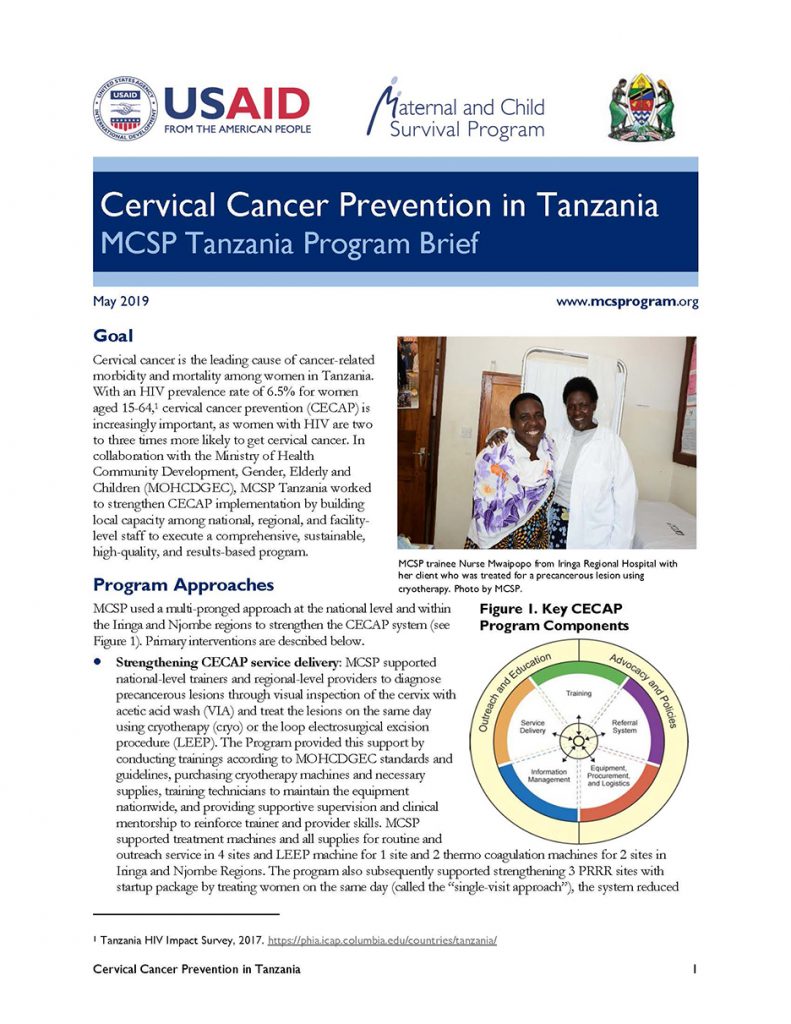
In collaboration with the Ministry of Health Community Development, Gender, Elderly and Children (MOHCDGEC), MCSP Tanzania worked to strengthen cervical cancer prevention implementation by building local capacity among national, regional, and facility-level staff to execute a comprehensive, sustainable, high-quality, and results-based program. […]
Read More…
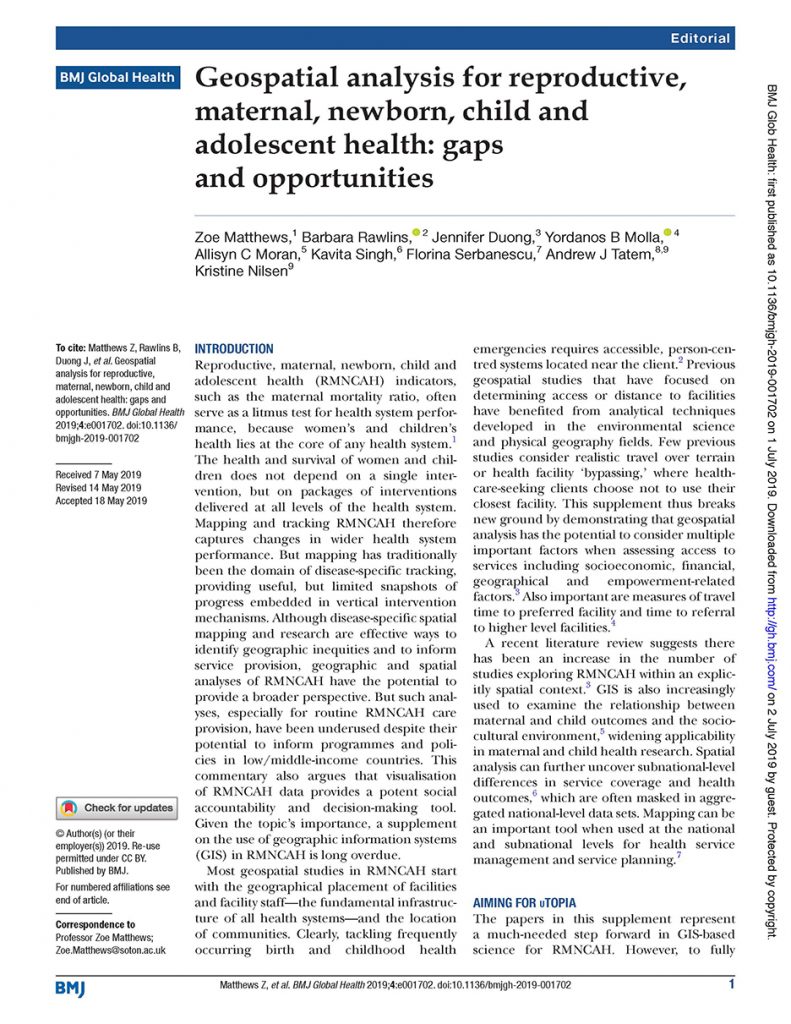
Supplement Editors: Kristine Nilsen and Andrew J. Tatem The purpose of this journal supplement in BMJ Global Health is to document and share single and multi-country experiences of utilizing GIS to analyze and improve RMNCAH outcomes. We share practical examples of how geospatial analyses can be used to investigate barriers to care, understand patterns of […]
Read More…
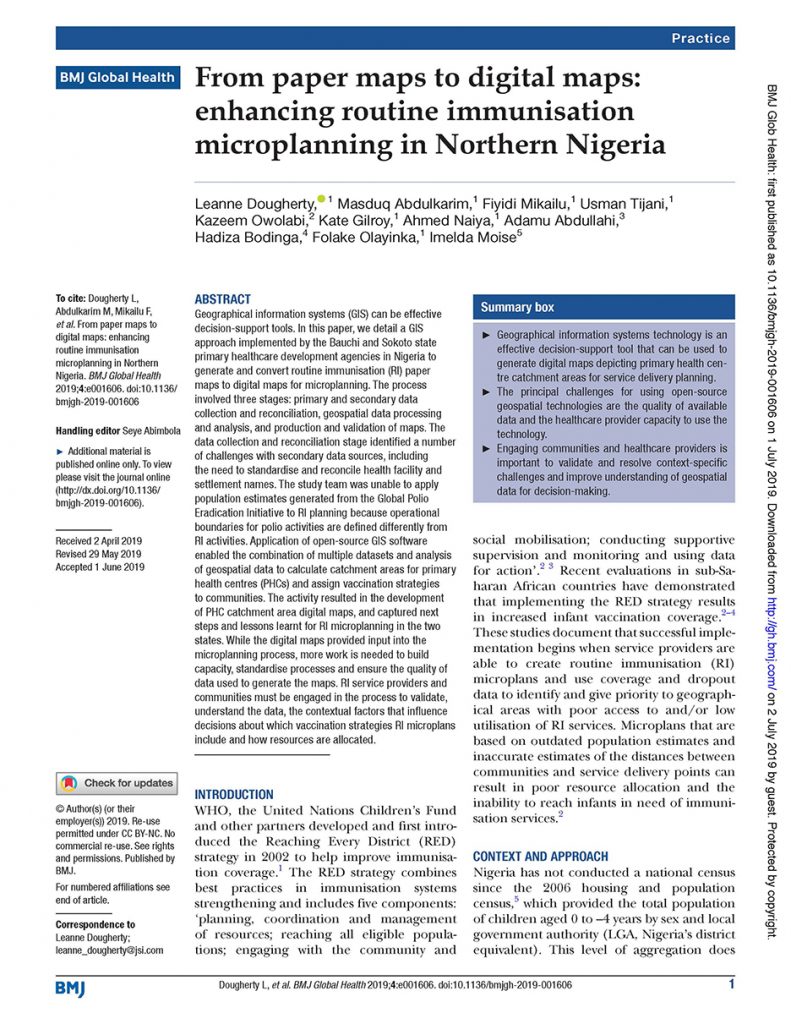
Geographical information systems (GIS) can be effective decision-support tools. In this paper, we detail a GIS approach implemented by the Bauchi and Sokoto state primary healthcare development agencies in Nigeria to generate and convert routine immunisation (RI) paper maps to digital maps for microplanning. […]
Read More…
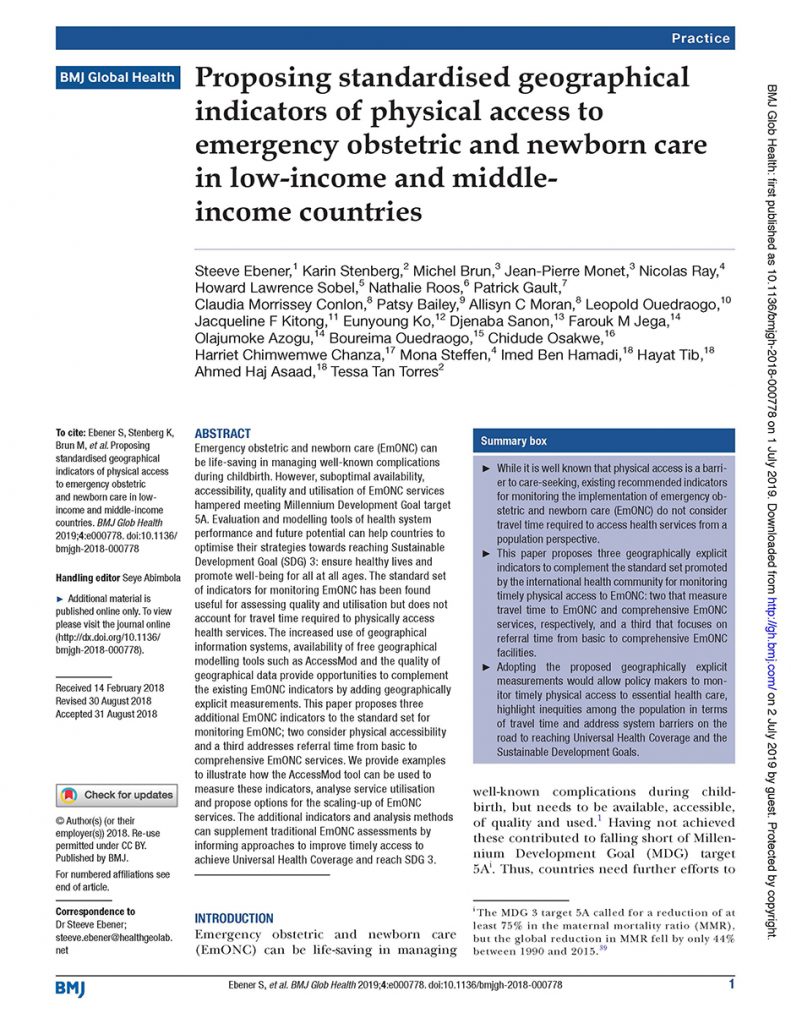
This paper proposes three additional emergency obstetric and newborn care (EmONC) indicators to the standard set for monitoring EmONC; two consider physical accessibility and a third addresses referral time from basic to comprehensive EmONC services. We provide examples to illustrate how the AccessMod tool can be used to measure these indicators, analyse service utilisation and […]
Read More…

The application of a geographic information system (GIS) in public health is relatively common in Bangladesh. However, the use of GIS for planning, monitoring and decision-making by local-level managers has not been well documented. This assessment explored how effectively local government health managers used maps with spatial data for planning, resource allocation and programme monitoring. […]
Read More…
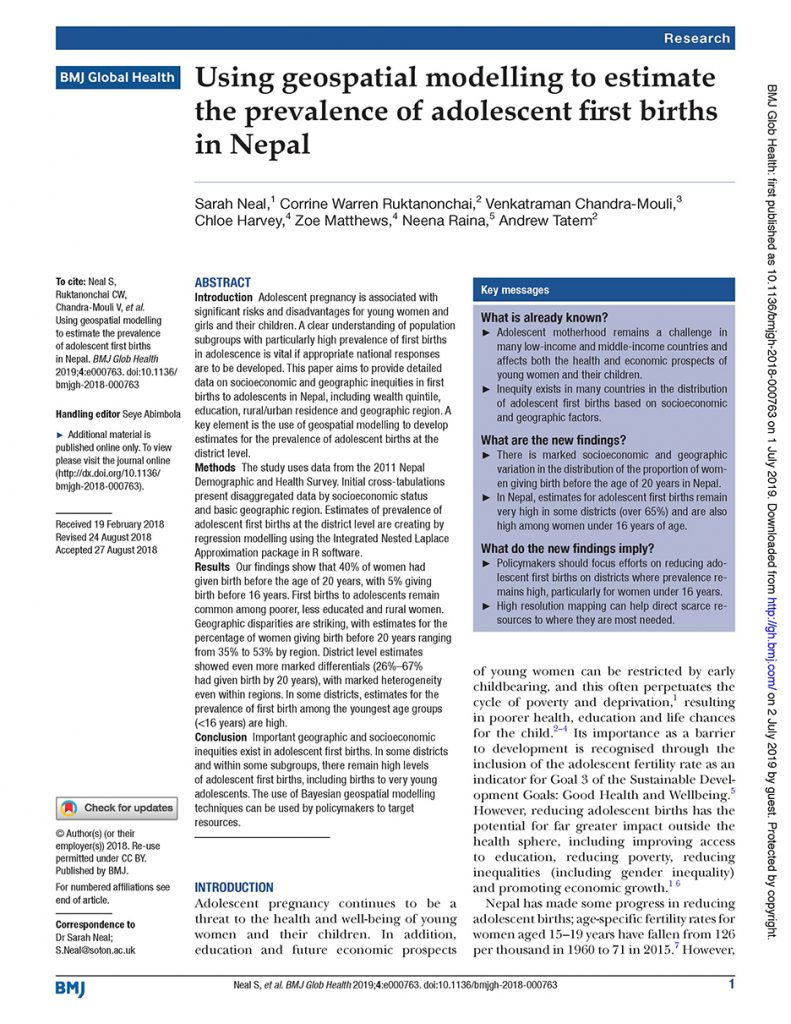
Adolescent pregnancy is associated with significant risks and disadvantages for young women and girls and their children. A clear understanding of population subgroups with particularly high prevalence of first births in adolescence is vital if appropriate national responses are to be developed. This paper aims to provide detailed data on socioeconomic and geographic inequities in […]
Read More…
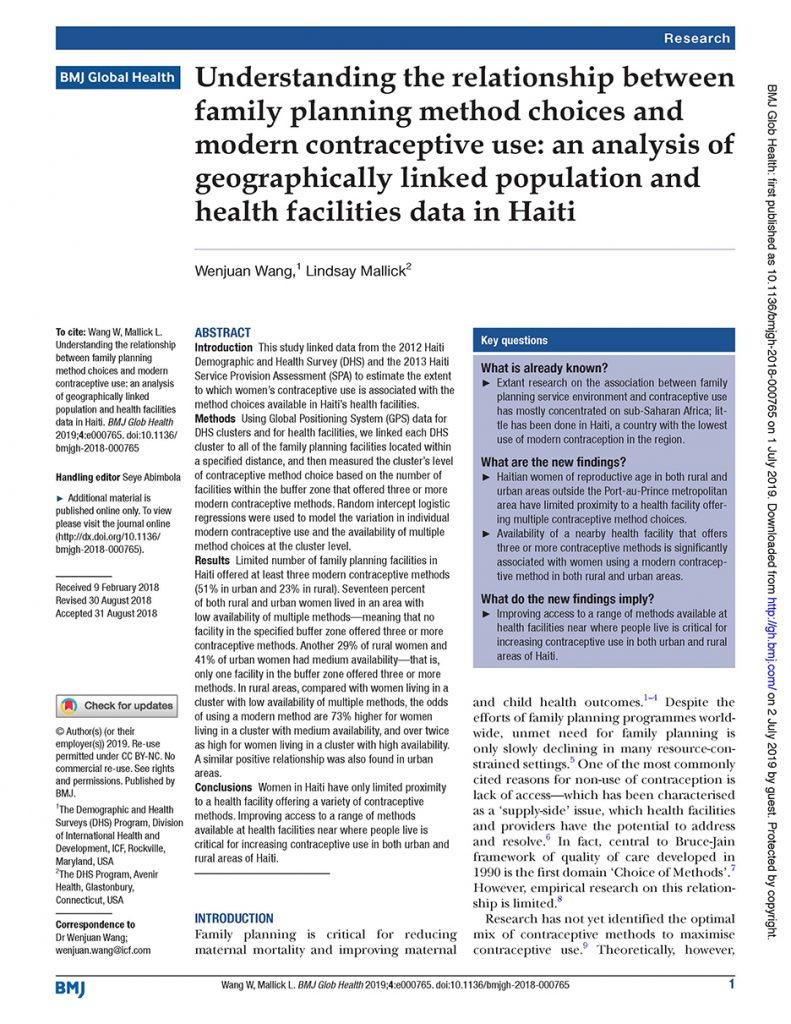
This study linked data from the 2012 Haiti Demographic and Health Survey and the 2013 Haiti Service Provision Assessment to estimate the extent to which women’s contraceptive use is associated with the method choices available in Haiti’s health facilities. […]
Read More…
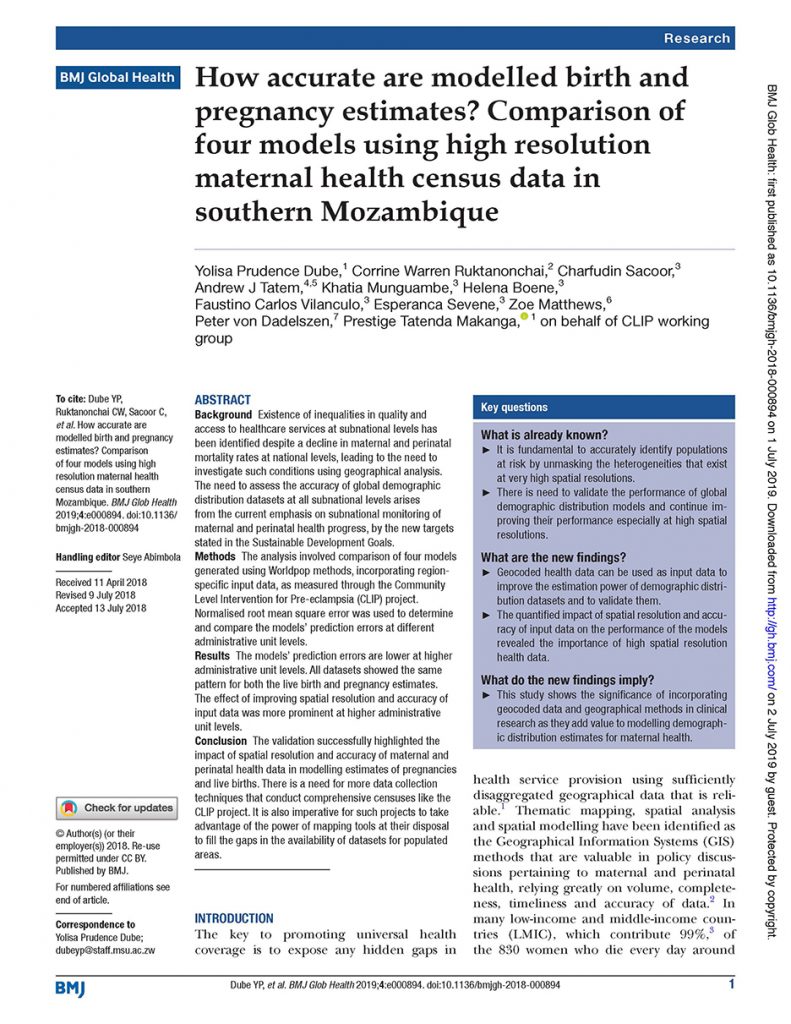
Existence of inequalities in quality and access to healthcare services at subnational levels has been identified despite a decline in maternal and perinatal mortality rates at national levels, leading to the need to investigate such conditions using geographical analysis. The need to assess the accuracy of global demographic distribution datasets at all subnational levels arises […]
Read More…










